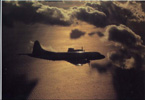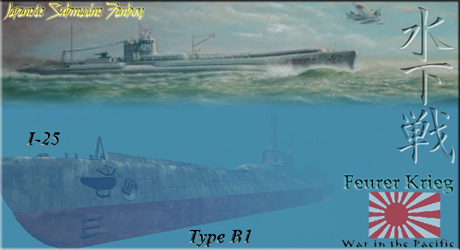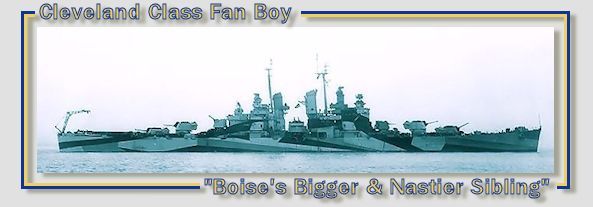Cuttlefish
Posts: 2454
Joined: 1/24/2007
From: Oregon, USA
Status: offline

|
November 5, 1943
Location: Kwajalein
Course: None
Attached to: TF 4
Mission: Air Combat
System Damage: 1
Float Damage: 0
Fires: 0
Fuel: 454
Orders: Await further orders
---
Captain Ishii also reads the Mainichi Shimbun editorial. When he is done he puts down the paper and speaks to Lieutenant Miharu, who is seated across the table from him.
“Did you read this piece calling on the Americans to stop fighting and negotiate peace with us, Exec?” he asks.
“Yes sir,” answers Miharu. “Very interesting, I thought. Those editorials are pretty much written by the government. It made me wonder if there was anything official to back it up.”
“I am sure that we would be delighted to negotiate an end to the war,” says Ishii. “That was always the plan, to carve out a defensive perimeter and hold it until the enemy is willing to negotiate. The question is, would the Americans ever entertain such an idea? I have heard you express the opinion in the past that you don’t think they will stop fighting.”
The lieutenant puts down his cup. “I think,” he says, speaking carefully, “that they will be much more reluctant to stop this war than most of us suppose. I believe they are capable of greater resolve than our leaders think, and their pride and honor have been severely stung.”
“So you do not think that peace is likely any time soon?” Ishii asks.
“Not likely, sir, no,” says the lieutenant. “But how can I say for certain? It is hard to judge the mood in America from the deck of a destroyer in the Marshall Islands! If they see victory as hopeless, then yes, I think they might negotiate.”
“Hopeless, hm?” muses the captain. “I don’t know if they are winning, but certainly their position doesn’t seem to be hopeless.”
“It doesn’t matter whether it is hopeless or not,” comments Lieutenant Miharu. “What matters is if they think it is.”
---
Excerpt from "Naval Battles of the Pacific, Volume 5: Decision" by Morris Elliot Samuelson; Harper, Row, and Fujimori, New York, 1965:
The pressure the Allied forces were exerting was beginning to be felt in Tokyo. By the beginning of October influential voices were suggesting that if Japan was to end the war on favorable terms it should be done soon. Among the voices was that of Admiral Yamamoto, who told Naval Minister Shimada “If you ask me to hold off the enemy for one more year I can do so. If you ask me to hold them off for two more years I will of course do my utmost, but I cannot foresee success.”
The biggest question was whether or not a proposal could be drafted that would be acceptable to the both the Allied powers of Britain, China, and America and to military hard-liners within Japan. These hawks, almost all of them within the Army, were loathe to give up any of Japan’s conquests and fiercely opposed any suggestions to that effect.
Under pressure from Prime Minister Tojo most of these hard-liners were persuaded to agree to at least open negotiations, with the understanding that their views would be heard. A working group was accordingly appointed by the Imperial War Cabinet to “test the waters” and see what, if any, terms might be acceptable to the Allies. The leader of the group was the former Prime Minister, Prince Konoye.
Konoye and the others worked swiftly. By the beginning of November a rough draft of the proposal known as the Greater East Asia Accords was ready. The outline of the proposal was broadcast on November 5 and by the next day copies were in the hands of the leaders of the Allied governments. The main points of the proposal were as follows:
1. An immediate cease-fire by all combatants.
2. Japan would retain all of her former possessions in the Pacific, with the addition of Guam, New Britain and New Ireland, the Solomons, and the Gilberts.
3. Japan would withdraw from the former Dutch East Indies. These territories would be granted independence.
4. Japan would withdraw from the Philippines, which would also be granted independence.
5. Singapore and Hong Kong would be returned to the British.
6. Japan would renounce all territory in China with the exception of Shanghai, which would become an open city under the administration of Japan.
7. Burma and French Indochina would be granted independence.
8. Recognition of Manchuoko as a Japanese province.
9. Resumption of open and unfettered trade between Japan and all other powers.
The major Japanese concession was in China. This was buffered by several sub clauses aimed at appeasing the militarists, including reparations by the Chinese and guarantees that the Communist forces in China would be disarmed by Nationalist, Japanese, and Allied forces.
Reception in America of these terms was mixed, to say the least. Henry Stimson rejected them out of hand. Roosevelt, for his part, had been sitting on a declaration that the only acceptable condition for the end of the war was unconditional surrender by the Axis powers. It was still sitting in his desk, waiting for the moment when the Allies’ military position was favorable enough to allow him to make such an announcement.
But there was strong support elsewhere for at least listening to the Japanese proposal. The perception was widespread that the war in the Pacific had so far been a failure. American and Commonwealth forces, as we have seen, had conquered eastern New Guinea and New Caledonia. But progress was slow and the Japanese fleet still ruled the seas. In Asia the British had remained stalled for months outside of Mandalay, while in China the Japanese had continued to occupy territory.
The issue was hotly debated by the public, in the press, and in Congress. Support for continuing the war was strong, but as Roosevelt wrote in a letter to Churchill, “If our carrier forces meet with defeat again I can see no end to this war.” In such a case, he recognized, he might have no choice but to open negotiations with the Japanese.
The Japanese too recognized that they might be one victory away from a successful conclusion to the war. The next carrier battle might well be the long-sought Decisive Battle.
Both sides, then, knew that they needed to fight soon, and to win. The result of this pressure was to be the greatest naval battle in history, the Battle of the Santa Cruz Islands.
|
 Printable Version
Printable Version





























 New Messages
New Messages No New Messages
No New Messages Hot Topic w/ New Messages
Hot Topic w/ New Messages Hot Topic w/o New Messages
Hot Topic w/o New Messages Locked w/ New Messages
Locked w/ New Messages Locked w/o New Messages
Locked w/o New Messages Post New Thread
Post New Thread